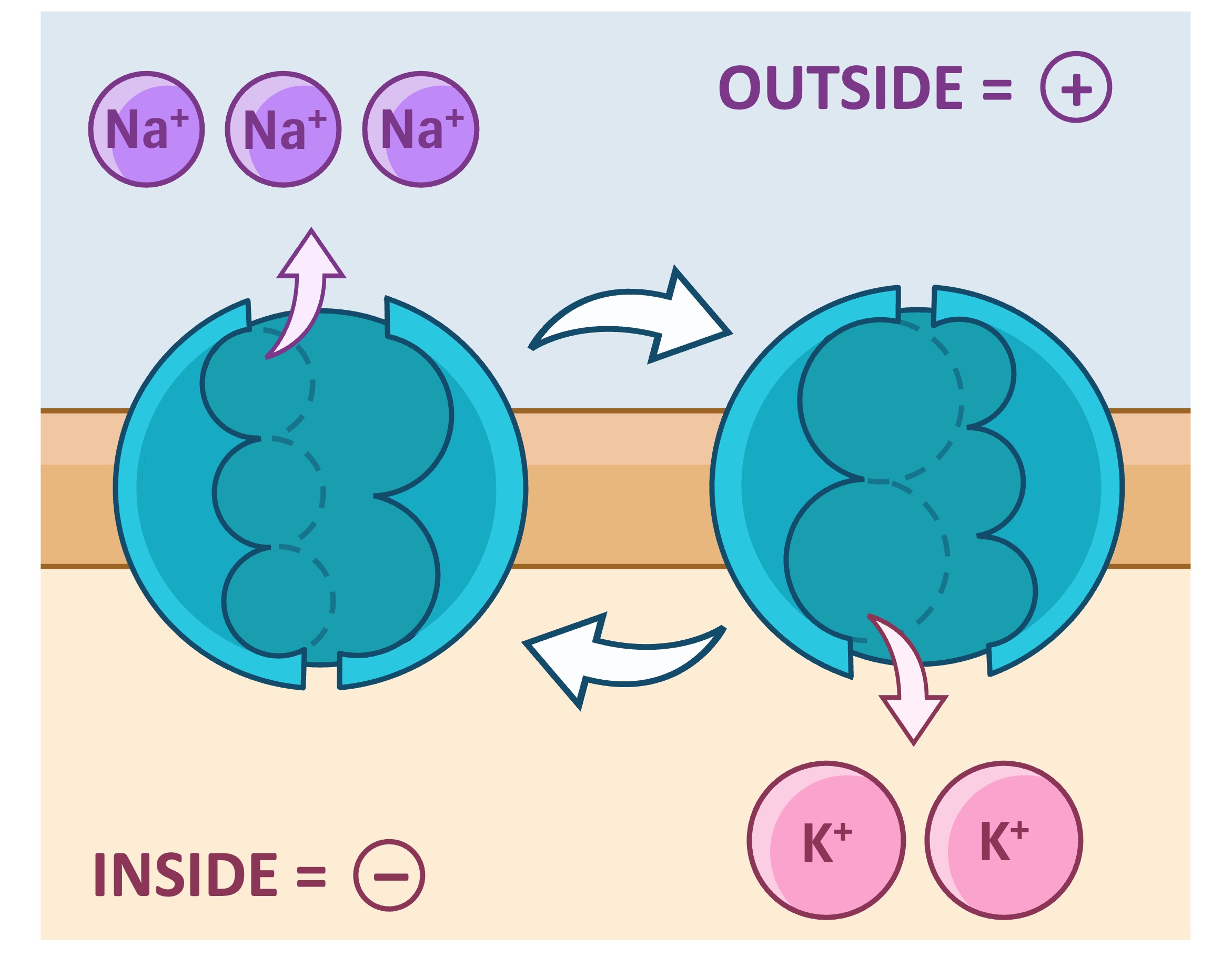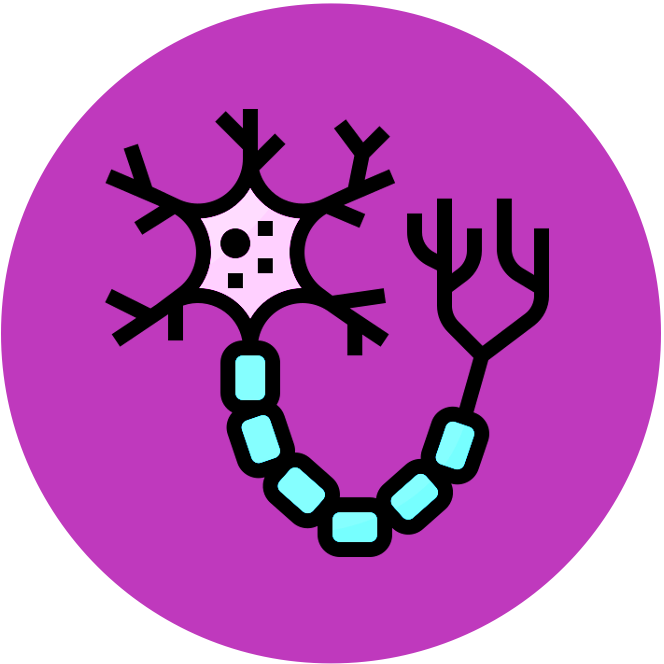

Resting Potentials
Neurons generate and conduct electrical signals by pumping positively charged ions (Na+ and K+) across their membrane
-
The unequal distribution of ions on different sides of the membrane creates a charge difference called a membrane potential
A resting potential is the difference in charge across the membrane when a neuron is not firing
-
In a typical resting potential, the inside of the neuron is more negative relative to the outside (approximately –70 mV)
The maintenance of a resting potential is an active process and is controlled by sodium-potassium pumps
-
The sodium-potassium pump is a transmembrane protein that actively exchanges sodium and potassium ions (antiport)
-
It expels three Na+ ions for every two K+ ions admitted (additionally, some K+ ions will then leak back out of the cell)
-
This creates an electrochemical gradient whereby the cell interior is relatively negative compared to the extracellular environment (as there are more positively charged ions outside of the cell)
-
The exchange of sodium and potassium ions requires the hydrolysis of ATP (it is an energy-dependent process)
Sodium-Potassium Pump





